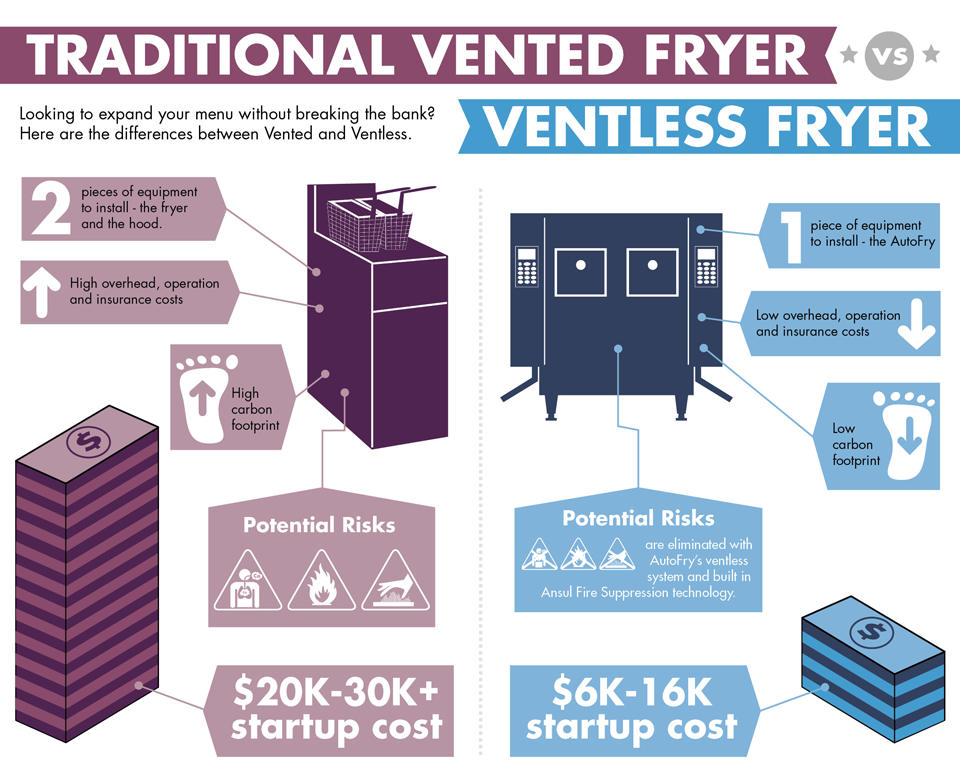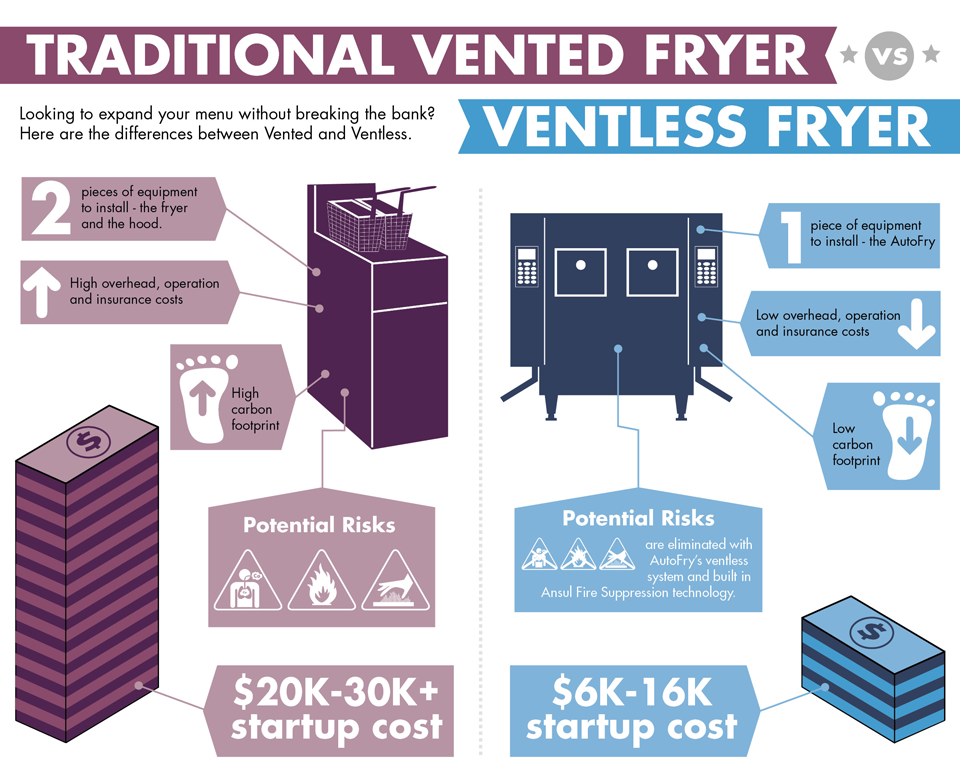Contact Us
1-800-348-2976
sales@mtiproducts.com
Ventless Revolution

Why Ventless? Vented vs Ventless Commercial Deep Fryer
One of the most common questions we get when discussing commercial deep fryer options is why go with a ventless fryer? Why does it matter? Is it really that important? We think so! With the AutoFry and the MultiChef, ventless and hoodless operation is a key selling point for a few simple reasons.
Ventless vs. Vented Costs:
First, when you’re looking to add new cooking technology to your line up you need to think about cost: cost of equipment, cost of installation and cost of product the equipment can cook. Most people only consider the first cost… that is a HUGE mistake. While equipment cost should be a factor in your purchase decision, it should not be the only consideration.
Installation cost can often be a lot more expensive than the equipment itself, especially if you have to make renovations to your kitchen to meet safety requirements. For example, consider a deep fryer may cost $2,500 – that sounds cheap compared to $6,000 for an ventless fryer like AutoFry. But when you factor in the cost of an exhaust hood for your deep fryer at $20,000-30,000 and have to pay for the installation of the exhaust hood on top of that, you’re looking at a very expensive purchase.
Ventless vs. Vented Installation:
So now that we’ve examined initial cost, let’s consider installation. With the AutoFry, because it is a ventless fryer and fully enclosed, the only installation necessary is plugging in the fryer to a 220-volt outlet. The unit is easy to move around the kitchen with the outlet being it’s only necessity. With a traditional hooded fryer you need to install the unit and a hood. Two separate installations, each with their own costs and procedures. Also, you must choose a permanent place for your deep fryer as moving the hood down the road will be costly.
Ventless vs. Vented Safety:
Most importantly, let’s talk safety. As a business owner, safety needs to be a top priority for you and your staff at all times. Deep fryers offer a slew of potential risks to your employees year round. Burns are the most common hazard to your employees when operating a deep fryer. Fryer oil is usually kept around 350˚F and the number one cause of burns in the kitchen. While this is a problem with a deep fryer, our ventless fryer, AutoFry, is fully enclosed so the user is never exposed to dangerously hot oil.
Carbon Monoxide poisoning is another danger of working with a deep fryer. Carbon monoxide is an odorless and colorless gas emitted when something is burned. The vent hood installed with a deep fryer helps to divert the poisonous gas, but if the vent hood or fryer exhaust stops functioning properly, carbon monoxide can quickly fill your entire kitchen. Minor symptoms of carbon monoxide poisoning include headaches, nausea and dizziness, but extended exposure can result in lost consciousness and even death. By operating a ventless fryer instead you eliminate all risk of poisonous gas. In addition, the AutoFry comes equipped with an Ansul Fire Suppression System, giving you peace of mind for a safe work environment.
Visually Speaking:
So whether you’re concerned about costs, installation or safety, vented versus ventless fryers makes a huge difference! Here at MTI, we believe a ventless fryer system is the ideal cooking companion, offering you great taste at a fraction of the cost.
Check out our inforgraphic below for an overview of Vented vs Ventless.


